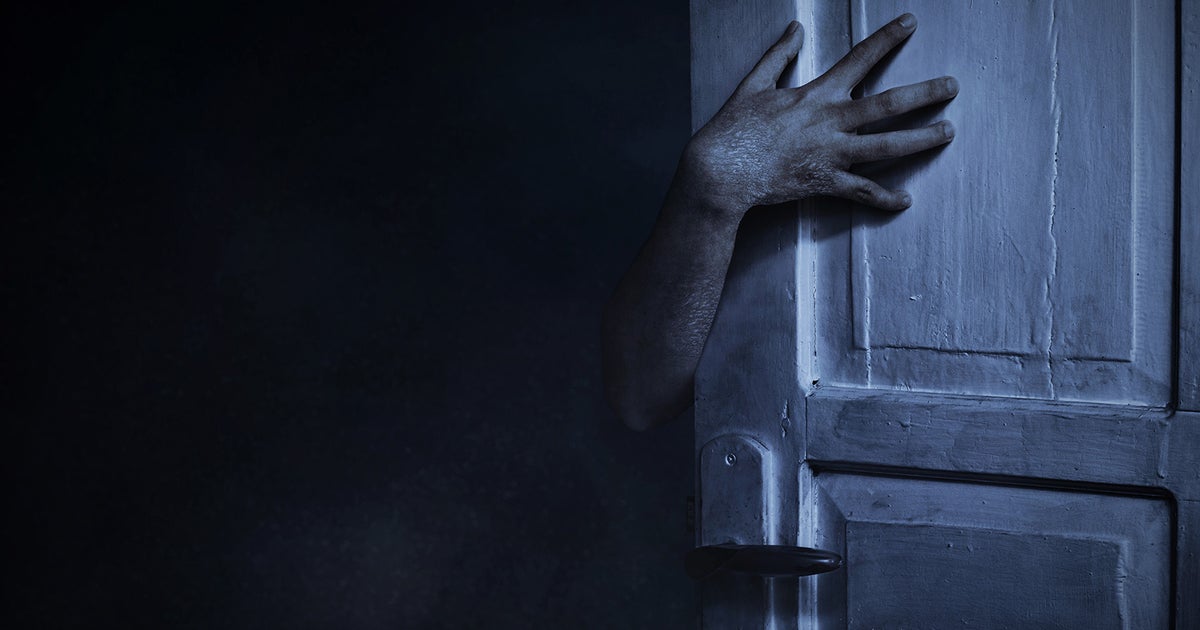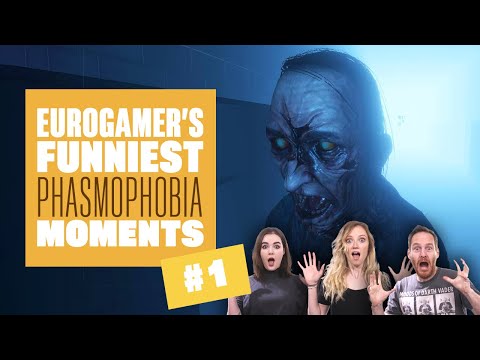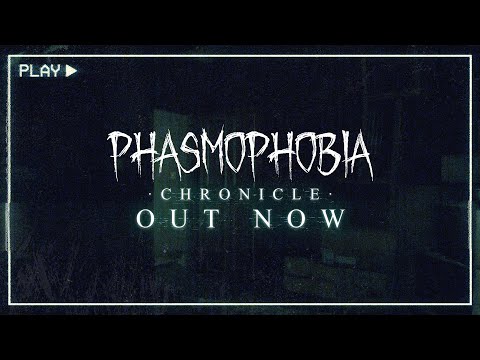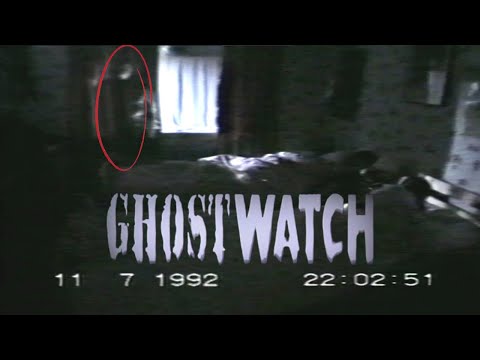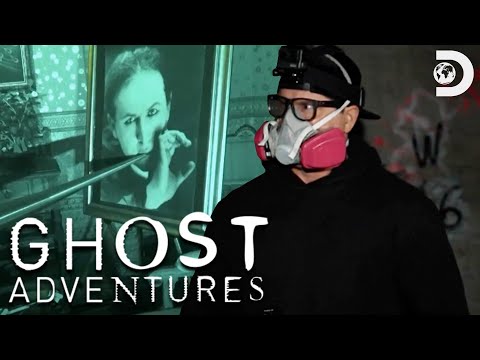“There wasn’t always a ghost.”
Solo creator Daniel Knight had a problem he didn’t know how to fix. He had the makings of the game we know now, a game about hunting ghosts with your friends, in which you’d travel to different locations, different homes, and use gadgets like electromagnetic field readers (EMFs) and spirit boxes and temperature gauges to locate paranormal activity. Doors would slam and lights would flicker and ghostly noises would sound. It was creepy. But the game lacked purpose and Knight couldn’t work out how to make it fun.
“There could have been absolutely nothing,” Knight tells me, when we meet. “You go in, there’s ambient sounds, and you have to figure out is it just the house making noises or is there actually a ghost there?” A true or false kind of situation. If you think of the shape Phasmophobia has now, where there’s a long set-up phase before a short, intense, perilous confrontation with a ghost, what he’s describing is only half of the experience. The slow part of the game without the chase. Understandably, then, “It ended up being not too fun to play.
New idea: make it more like the film The Grudge, where a person had died in a house and remained there, haunting it. This would at least ensure a ghost would be there. Your job would be to discover their name. You’d use your ghost-hunting gadgets to locate objects around the house that are connected with them, then you’d gather them up, take them to the room of the house most closely associated with them, and perform a banishment ritual there. An exorcism. It worked a bit like the summoning circle which is in the game now: you place and light candles in a circle to call forth a spirit. “But at the time,” Knight says, “it was on this big board. You had to carry it around like an Ouija board and place all the items on the board, light these candles, and then the ghost was banished.”
But again, the idea didn’t work. “It wasn’t too fun to play because most of the gameplay you were ignoring the ghosts and running around trying to find all these different items in the house,” Knight explains. “And also,” he adds, “the mentality of knowing that you could actually remove the ghost made it not scary, because you then had the knowledge you were more powerful than the ghost.”
Try as he might, and he prototyped the game for close to two years, Knight couldn’t find something compelling enough to bind the game together with. One day, exasperated, he stopped. “I just stopped,” he says. “I couldn’t really decide where to take it.” Days passed. Weeks began to pass. Months began to go by. But still Knight didn’t touch the game, and gradually, the dream he had of making something of his own, the kind of game he’d like to play with his friends, began to fade. He started thinking about getting a regular job again and putting all of this behind him. “I almost completely abandoned the game,” he says.
What saved Phasmophobia, as we know it now, was the unexpected influence of a Polish role-playing game. Eight months had gone by when Knight found himself playing CD Projekt Red’s acclaimed adventure, The Witcher 3: Wild Hunt, and there, near the beginning of the game, was the answer he’d been looking for. It was in a quest called the Devil by the Well, in the White Orchard prologue part of the game, where hero Geralt is tasked with removing a monster, a wraith, that’s haunting a well. It’s a tutorial of sorts, an introduction to monster hunting, and a specified step of it is to pull up the bestiary and research the wraith you’re facing, so you can work out how to banish it. This! This was the spark that lit up Knight’s head.
What if, he began to wonder, it wasn’t a ghost’s name you were looking for in his game but a ghost’s type? What if you and your friends collected evidence around a property in order to pinpoint the kind of ghost that was haunting it? You could have a journal! A journal like a bestiary that you crosschecked evidence in. There could be all kinds of ghosts with varying behaviours! All the pieces of the Phasmophobia experience we know now began to fall into place. In The Witcher 3, Knight had found his game’s purpose. “That’s what inspired the whole ghost-type idea,” he tells me. Phasmophobia was back.
Knight was only 19 years old when he started working on Phasmophobia. He’d spent a bit of time in full-time programming work, working for an email marketing company making virtual reality “experiences”, as he calls them, but always in the back of his mind was an urge to make a game of his own. So with the bravery of youth, perhaps, and the safety-net of living at home, he quit his job to pursue it. But never in the five years it took him to make the game did he think it would have anywhere near the success it has. Best case scenario, he thought, was Phasmophobia would sell 1000 copies in the game’s first year. This was the beginning of his indie career, remember, so all he really wanted was for people to play what he’d created and prove to his parents it could be a viable career. They didn’t really understand. Knight certainly didn’t expect Phasmophobia to sell 5000 copies on day one.
.jpg?width=1920&height=1920&fit=bounds&quality=70&format=jpg&auto=webp)
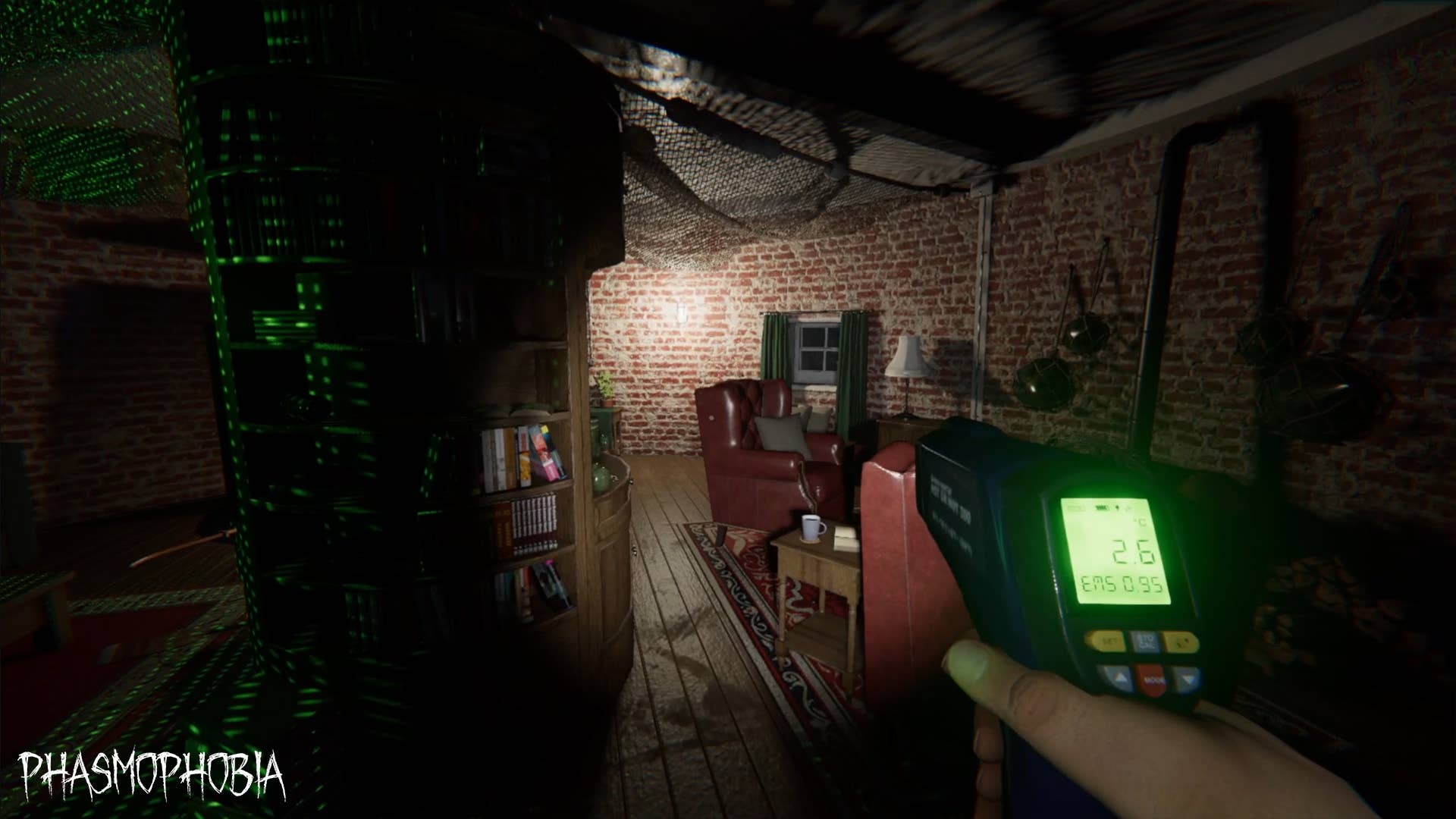
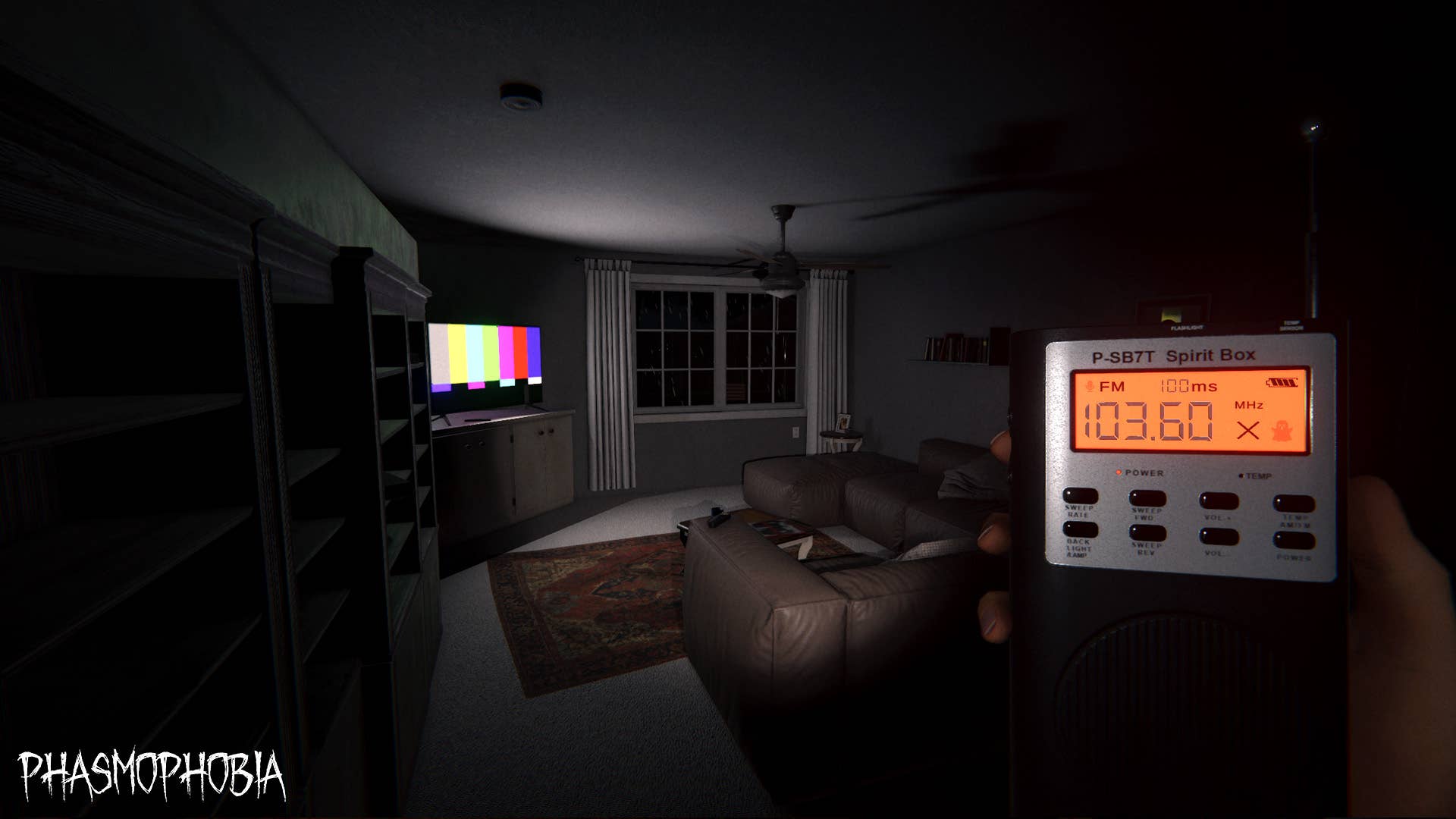
The signs it could be something big had been there, if he’d known where to look. The group of closed beta testers he’d invited from Reddit kept returning to the game unprompted to play it, which didn’t seem normal, and Knight’s spontaneous and somewhat inspired scattergun approach to send various strata of game-streaming influencers game-keys, from those with huge followings to those with small followings, somehow resulted in the big channels playing and the small ones not. Was that normal? As they did, Steam Wishlists for the game grew. When release day finally came and he opened the game’s Discord, hours before launch, hundreds of people were there, eagerly awaiting the game he’d made. “It was a bit strange because I wasn’t expecting it at all,” he tells me. But he stayed calm. “I was actually quite fine up to release,” he says. “As soon as it released though…”
“The sales were just going up and up and up. Constantly”
As soon as it released, it took off in a way no one could have predicted. In the weeks that followed, sales just continued to climb, to multiply. “The sales were just going up and up and up. Constantly,” Knight says. “I did no marketing at all, it was purely word of mouth, and everybody on Twitch was playing it, all the massive YouTubers started playing it. It got to a point where it was three weeks after the release and I sold 150,000 just in one day,” he says. Phasmophobia was everywhere. He had another 150,000 sales day on Halloween 2020, which is the same day the game recorded its highest Steam concurrent player count (112,717), and the cumulative effect of this popularity meant that within weeks, he was already at millions of sales. “By Christmas,” he adds, a mere three months after launch, “it was five or six million sales.” There’s still a note of disbelief in his manner as he tells me this now, mixed with, perhaps, a note of pride. “Very short amount of time,” he says, slightly shaking his head. Then, before I can ask, he offers: “And it was very stressful going through all of that.”
Today, five years later, I can plainly see the success Knight has enjoyed, because I’m at his house on the outskirts of Southampton, hidden in a warren of hedged, large house properties. Mansions, to call them another way. It’s impressive. A large iron gate swings automatically open to welcome me, revealing an old-style brick building hugging a large gravel drive beyond. There’s a huge mirrored ball in its center. And inside, there’s a swimming pool, a cinema room, and a bar and games room, complete with full-sized snooker table, an arcade cabinet and pinball machine. The white tiled floor running through the downstairs hallways reflects the sunlight like a mirror, exaggerating the glass chandelier that cascades down from – and seemingly all across – the ceiling above. Old on the outside, show-room-modern on the inside. It’s so clean and bare it looks as though no one lives here. But there, in the middle of this picture, is the person who does: Daniel Knight, wearing a dog hair-covered black Phasmophobia t-shirt, brownish utility shorts, forgettable trainers and socks, looking completely at odds with surroundings around him. This house he specced the refurb of. This, the first place he lived outside of his parents’ home.
Success was hard to cope with. The extraordinary sales of Phasmophobia, which launched as an unfinished Early Access game – a state it’s still in – meant people expected more from it than Knight could deliver on his own. “When people see there’s a game that sold millions and millions of copies, everyone expects some enormous team behind it,” he says. But of course there wasn’t: there was just him. At the same time, Knight was scrambling to handle the unforeseen mundanities of such success, like creating a business to collect the earnings in – a task complicated immensely by Covid and the panic surrounding it. Nervous banks weren’t taking on new customers. “I had to get my lawyer to have a meeting with someone from a bank to basically beg them to let me open an account,” Knight says.
Another boring one: server costs. Phasmophobia was only on a free plan because Knight never expected more than 100 people to concurrently play the game, but within hours, possibly minutes of release, his provider had moved him onto a pay-what-you-use premium package. And he couldn’t afford it. He had no money. Steam earnings are paid a month in arrears. “So the first month, I was asking my family for money just to pay the server costs.”
His inbox was overflowing with press requests for interviews, platform holders were enquiring about console ports, even film studios were apparently interested back then. “Even shortly after release, we had quite a big studio reach out,” he says. I laugh when he tells me he can’t remember the name of the studio, thinking he’s fobbing me off, but he genuinely seems not to recall it. Knight didn’t have time to respond to any of it. “It was hard to keep on top of everything,” he says. He was working 16-18 hour days in an effort just to catch up with his own success. “It got to a point where I just realised I couldn’t do everything,” he says. He had to enlist some help.
“I don’t actually believe in ghosts,” he says at one point, across the garden table from me, with a grin, as though he’s just delivered a shocking revelation, which, in a way, I suppose he has. It’s not the sort of thing I expect the creator of a ghost-hunting game to say. I expect someone who’s a bit of a believer, or someone fascinated in ghost-hunting culture – someone who I can talk to about the Uncanny podcast, perhaps. But it’s not him. I’ve watched and smiled at interviews where interviewers have asked Knight excitedly about cult British horror TV show Ghostwatch – which duped viewers into believing a TV crew was investigating real paranormal activity in a house somewhere – expecting to get an equally excited response, to talk about a subject close to their hearts, only for Knight to smile coyly and shrug. Ghosts: he’s not that fussed about them, it seems. He doesn’t even like to play horror games.
This magical spark, then, occurred to him out of nowhere. “I wasn’t really setting out to make a horror game,” he tells me. “It was just ghost-hunting seemed to be the perfect kind of puzzle game for you to play with friends.” Once decided, that was the point he threw himself into research, watching, in particular, endless amounts of Discovery Channel ghost-hunting show Ghost Adventures. That’s the real inspiration. “The main thing I wanted was a social co-op game where you actually stand next to your friend and experience everything together,” he adds. “Most multiplayer horror games at the moment, you just go in and run off in completely different directions. I didn’t want that. I didn’t want you to be running away from a monster or running away from something. You had to walk up to the monster together.”
It’s this shared-scare experience that propelled Phasmophobia far and wide, despite its unfinished state, and the more that people flocked to it, the more Knight struggled to keep his initial plan for the game in place. “The plan, when the game released, was just to add a few more bits of equipment, a few more maps, a few more ghosts, do all the bug fixing and everything required, and then that would be it,” he says. A process it sounds like he envisaged lasting months or maybe a year. But the popularity meant a rethink, which is how we’re here, five years later, still awaiting the game’s full release.
Lots has been happening, though. After conceding he couldn’t do everything, Knight hired a couple of friends to join his team, then hired a further 20 staff last year to handle the console ports the studio, Kinetic Games, now decided it could do. Those came out last autumn. Then in June this year, Phasmophobia got its biggest update yet, Chronicle, which overhauled evidence gathering in the game and introduced the sound recorder gadget. “If we did that update last year,” Knight says, “it would have had probably less than half of what was in there.” That’s what this hiring has done, enabled significant ongoing redevelopment of the game, and that work, and the hiring, will continue.
More to the point, the console release, which is cross-play compatible, and the Chronicle update, have rejuvenated player activity in the game. When Chronicle released on 24th June, concurrent player numbers jumped to over 100,000 again, Knight tells me, which is a figure the game hasn’t reached since its heyday in 2020. It goes against the common perception that Phasmophobia is fading away.
In preparation for this interview, I spoke to a handful of people on the Eurogamer team, and beyond, who’d spent hundreds of hours playing Phasmophobia (if you haven’t seen Ian, Aoife and Zoe’s many hilarious streams, then you should), and all of them said the same thing: that they’d drifted away from the game. That they hadn’t played in months, or years, because they’d gotten tired of the same formula. It’s a common problem Early Access games face, whereby they can have their biggest moments before they’re really ready for them, before they’re ‘complete’. But what if Phasmophobia hasn’t had its biggest days yet?
Knight believes the game’s biggest days are ahead of it, which I suppose he would say, but there’s a good reason for it. Horror 2.0, which is the rather confusing title of the game’s 1.0 release. It’s expected at some point next year, in 2026, and it’s going to be something big. “We’re basically going to be reworking the entire horror in the game,” Knight says, although what exactly that means is a bit of a mystery – and intentionally so. “I can’t reveal too much because when we release the update,” he says, “we’re going to tell everyone there’s a new update: go and play.” There won’t be detailed patch notes, just an ominous, open door, the hope being that people will rush in and feel like they’re exploring something new again. “We want people to, once that update comes out, feel like they’re playing a new game,” he says.
“What we’re focusing on going forward is making smaller maps, which is what everybody wants.”
In the meantime, the major updates will continue, such as the upcoming rework of character models, of maps, and the addition of new ones. And don’t worry: “What we’re focusing on going forward is making smaller maps,” Knight says, “which is what everybody wants.”
His success is starting to sink in. Knight might cut a slightly uncomfortable figure while being interviewed, as though he can’t quite express the thoughts he’s having in his head, but there are moments where a quiet confidence comes through too. The sort of confidence I imagine you build as you grow a company from only yourself to nearly 30 people, and deal with an endless parade of lawyers and accountants and financial advisors and PR companies and platform holders and millions of fans. (I bump into Knight a week after we meet, at a game development conference in Brighton, and as I say hello, someone taps him on the shoulder to tell him how much they love his game. They spotted his Phasmophobia t-shirt. They’ve got questions, they say, and Knight smiles at me almost apologetically as the questions start to tumble out, as if to say sorry, this happens a lot.)
And movie studios. “We had a few different studios reach out,” Knight says, referencing the recent news that Blumhouse and Atomic Monster will adapt Phasmophobia into a film (another reason, perhaps, the game’s most popular days may yet be ahead). And Knight tells me he will be creatively involved with it. “We do want to make sure it is a Phasmophobia film and it’s what everybody will expect going in,” he says. “We’re not just making a ghost hunting film. It will be a Phasmophobia-themed film.” Whatever that means.

As I pack up to leave, Knight mentions he’s been working on Phasmophobia for 10 years now, and it surprises me, perhaps because the game still seems new to me, despite being five years old, and perhaps because I don’t count the years before release he was making it. But 10 years is a third of his life. That’s a long time, and it sounds like he intends to work on it for a few more years to come yet. It’s the sole focus of the studio for the foreseeable future. There are, however, background thoughts about something new. “It’s always in the back of my mind,” he says. Maybe that’s Phasmophobia 2 or maybe it’s something else. There’s a moment where it looks like he might tell me before he loses his nerve, or decides against it, and says, with a smile, “You’ll just have to see what happens.”
Where Phasmophobia and Daniel Knight go from here, we’ll have to see, but his game’s phenomenal success radiates like a sunrise across an industry choked in doom and gloom. This is what’s possible, it says – this is the enormous potential games still have. As I shake hands with Knight and leave him leaning on a column that frames the entrance, I ask him whether he feels like he belongs to his life yet, to which he replies, “I think I’ve mostly gotten used to it. But things happen every now and again, like this film, where it’s changing my mindset back into like, ‘What is happening?'” he says. It reminds me that the rollercoaster of Phasmophobia hasn’t ended yet, and that the pinch-me moments still continue to occur. Whatever the future holds for Knight and Kinetic, it’s full of possibility.
